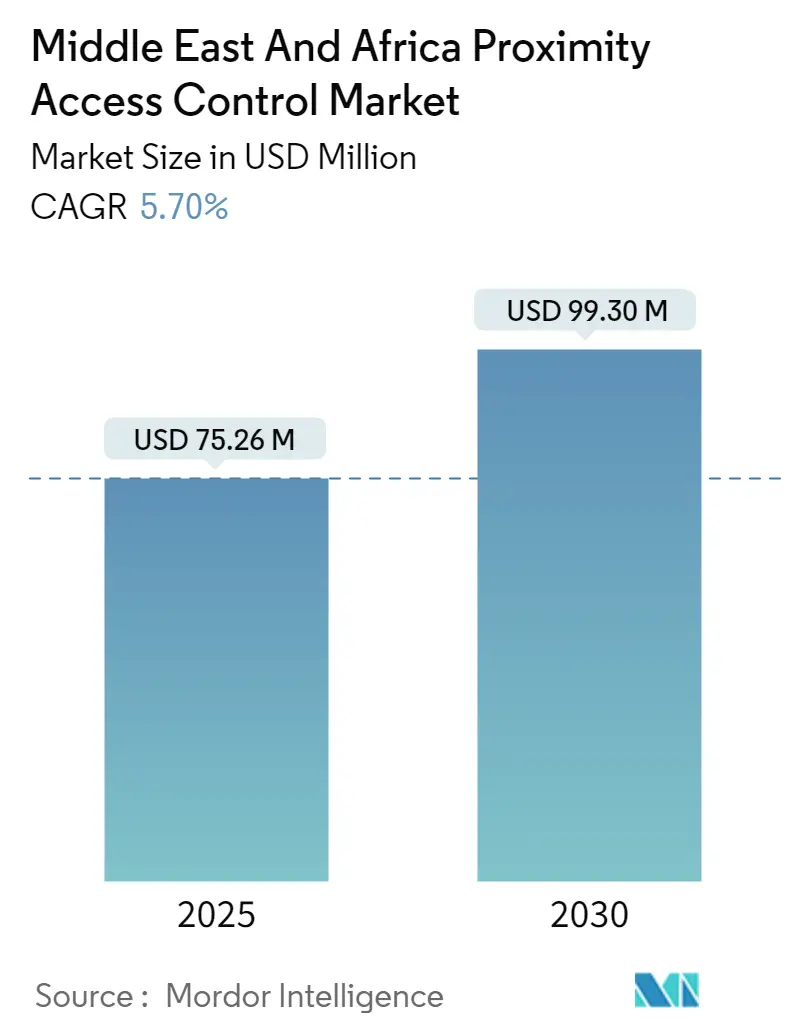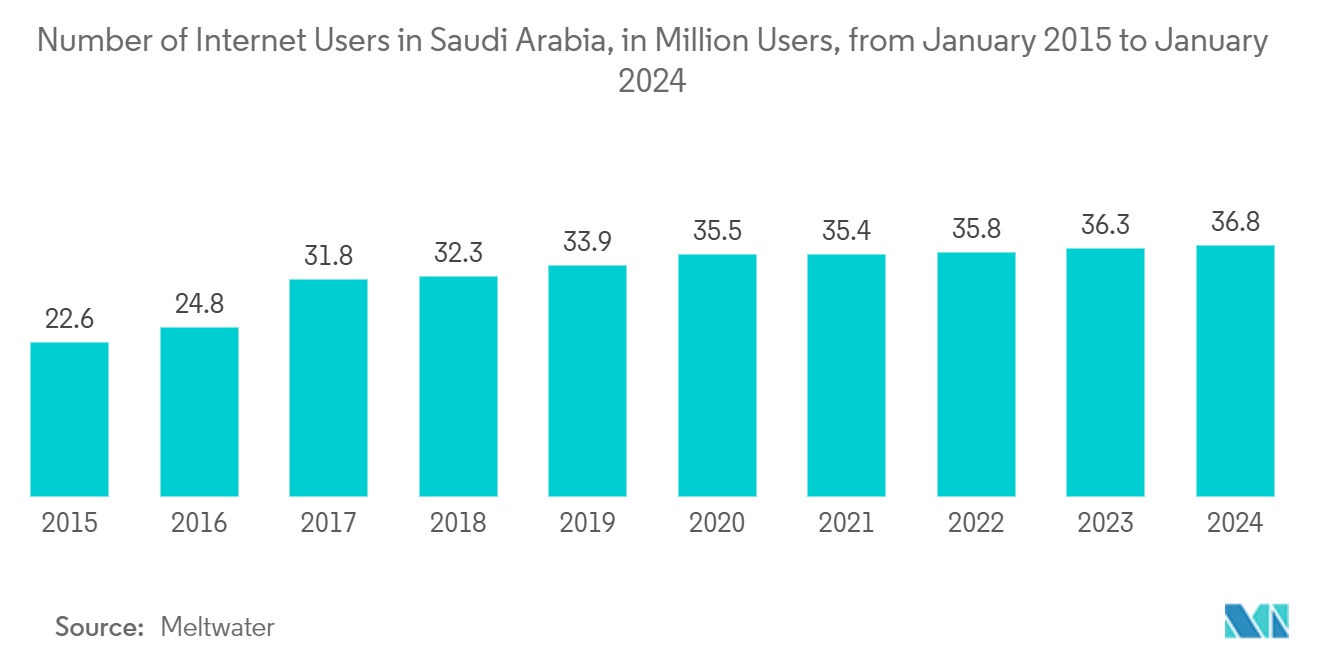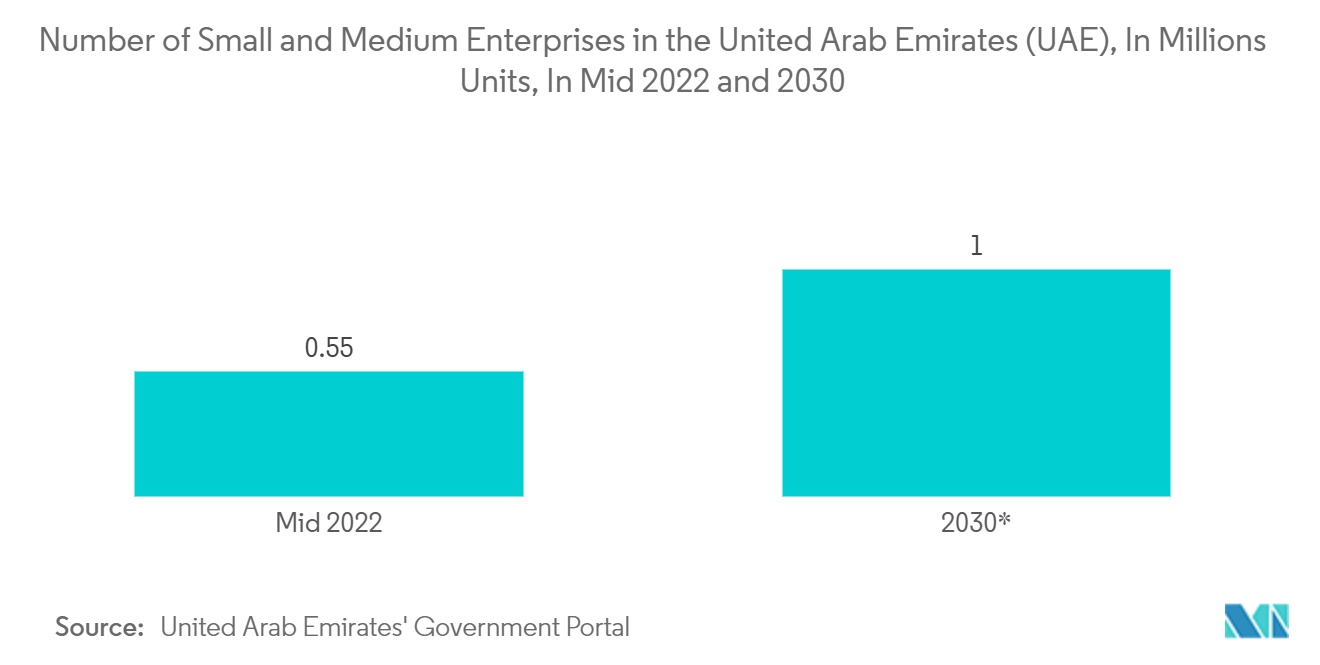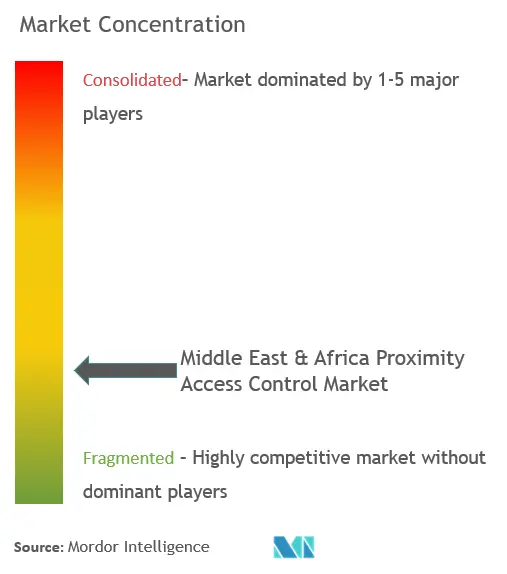Middle East And Africa Proximity Access Control Market Size and Share

Middle East And Africa Proximity Access Control Market Analysis by Mordor Intelligence
The Middle East And Africa Proximity Access Control Market size is estimated at USD 75.26 million in 2025, and is expected to reach USD 99.30 million by 2030, at a CAGR of 5.7% during the forecast period (2025-2030).
- Proximity access control has evolved beyond a mere security feature and is now a pivotal asset for businesses aiming at enhanced efficiency and cost savings. Factors such as the rising adoption of wireless and contactless technology, the surge in hybrid work models, and the demand for interoperable workplace solutions are driving this transformation in proximity access control.
- Proximity access control systems have experienced significant advancements driven by numerous companies' proliferation of cutting-edge technologies. Integrating smartphone applications and sensor technology has elevated touchless access from a convenience to a necessity. As technology, particularly IoT, becomes integral to daily life through smart home devices and keyless vehicle systems, its importance in workplace security has increased. Consequently, the public is rapidly adapting to these new access control technologies.
- Proximity access control systems emphasize integrating cyber and physical security, highlighting the importance of connected intelligence within organizations. Advances in wireless technology have optimized hardware components, such as locks and controllers, by eliminating the need for physical cabling. Cloud-based systems enhance security by removing the dependency on servers and software, enabling secure remote access. With increasing safety concerns and a rising demand for advanced access control, the proximity access control market is expected to see significant growth, particularly as commercial organizations adopt these devices more widely.
- Implementing biometric access control systems is increasingly in demand among commercial and residential organizations in countries in the Middle East and Africa, such as UAE, Saudi Arabia, and South Africa, due to their heightened security risks. In 2023, Dubai Airports saw over 21 million passengers opt for biometric recognition, as reported by the General Directorate of Residency and Foreigners Affairs in Dubai (GDRFA Dubai). The adoption of biometric technology is on the rise in airports, offering passengers a seamless, secure, and hassle-free journey.
- However, the high installation costs associated with these systems are hindering their widespread adoption in the region. For instance, in 2023, according to Sophos, South Africa had a high ransomware prevalence among businesses, with 78% having experienced ransomware attacks in the preceding year. The ever-changing nature of ransomware attacks indicates that organizations may be hesitant to invest in access control solutions that they are uncertain will provide adequate protection.
- Geopolitical conflicts such as the Israel-Hamas conflict significantly affected the proximity access control market in the Middle East, as many firms and organizations in the region suspended their operations. This factor led to a decline in the demand for proximity access controller solutions, particularly in government, banking, financial services, retail, residential, hospitality, healthcare, and commercial sectors. Further, increasing inflation rate in countries in Africa and Middle East, such as Iran, Egypt, Algeria, Tunisia, and Morocco, is expected to hamper the market's growth.
Middle East And Africa Proximity Access Control Market Trends and Insights
The Biometric Scanners Segment is Expected to Hold a Significant Share in the Market
- Biometrics was widely employed in the security sector before the onset of the global pandemic. However, the utilization of biometrics has increased significantly in recent times due to the need for secure and contactless identification. The utilization of biometric technologies is on the rise in the modern era, with consumers expressing a heightened preference for convenient authentication and payment methods.
- The development of biometrics, such as iris scanning, finger scanning, facial recognition, and other forms of biometric verification, is a continuous process. Integrating mobile biometrics into credit and banking processes has become a critical security issue and a fundamental factor in enhancing the customer experience.
- For instance, in August 2023, the UAE (United Arab Emirates) Pass was expanded to cover 6,000 additional government and private sector services. Pass is accessible on a mobile device, either through an Apple Store or Google Play application, and comprises a physical Emirates ID and an applicant's face, which is scanned for biometric authentication. This Emirates ID card can open bank accounts and obtain a mobile connection, among other governmental and private sector activities. The UAE (United Arab Emirates) Pass allows users to access a range of services over the phone without entering a username or password.
- Online financial services involve exchanging personal and financial data, which can be highly sensitive and valuable. As a result, the increased reliance on these services has raised the potential for cyberattacks and fraudulent activities. Biometric authentication, such as facial and iris recognition, provides more secure authentication methods than traditional methods, such as PINs and passwords.
- According to Meltwater, the number of internet users in Saudi Arabia in January 2024 was 36.8 million users, up from 36.3 million users in 2023. Subsequently, most internet users, including bank customers, investors, insurance customers, and mobile app users, said using banking, investment, or insurance websites.
- Biometric scanners are utilized in various contexts, such as law enforcement and immigration enforcement, border surveillance, critical infrastructure protection, data center security, retail establishments, and military installations. In contrast, facial authentication enrolls authorized users and identifies unfamiliar individuals to deter theft and external threats.
- For instance, in September 2023, customers in Dubai could use their faces to pay for their purchases without the need for cash or credit cards following the launch of a facial recognition payment system by Network International in partnership with Carrefour. This system, known as Face Pay, is powered by PopID, a consumer authentication service provider.
- Despite potential security risks, biometric technology is still being utilized due to its convenience and ease of implementation. Most of the increase can be attributed to the increased investment in national identity card systems in the region. Technological progress has also contributed to the demand, with fingerprint scanning technology becoming increasingly cost-effective and secure.

The United Arab Emirates is Expected to Witness Significant Growth
- The rapidly expanding population and infrastructure of the United Arab Emirates, such as commercial and residential buildings, necessitate implementing advanced security solutions, such as proximity access controllers, to facilitate efficient access control and improve security.
- Tourism in Dubai, for instance, initiated the Keyless Security Project in May of 2023 to provide a convenient and user-friendly service to manage entry and exit procedures for residential and vacation homeowners and specialized companies for these types of properties. This service is equipped with Bluetooth technology and enables users to securely unlock and lock the doors using a smartphone's keyless application.
- Smart city projects typically occur in urban areas with a high population density. As cities expand, there is an increasing need to control access to various public and private establishments, such as transportation nodes, residential complexes, government buildings, and commercial areas. Proximity Access Control systems facilitate the efficient management of the entry and exit of these high-density areas. For instance, in July 2023, the collaboration of Abu Dhabi and Beijing was established to promote sustainable urban growth and smart city initiatives.
- Proximity access control systems provide a cost-effective and efficient solution to reduce security risks associated with SMEs, such as security breaches, unauthorized entry, and theft. According to the UAE Government Portal, small and medium-sized enterprises (SMEs) are highly valued by the UAE Government as they are essential for the UAE's economic growth, development, and human resources.
- The UAE is highly focused on safeguarding and enhancing security, particularly in critical infrastructure, transport, and governmental facilities. Proximity access controllers are essential for managing access to these locations. For instance, in 2017, 5,688,092 passengers utilized Dubai Airport's smart gates and biometric recognition systems. In 2023, this number surged to 21,169,506 passengers, marking a significant increase. In 2024, Dubai Airports has a network of 127 operational smart gates spread across its terminal buildings.

Competitive Landscape
The Middle East and Africa proximity access control market is fragmented. The market has a presence of various small and large players. All the major players account for a significant share of the market and are focusing on expanding their consumer base in the region. Some of the significant players in the market are Axis Communications AB, Dormakaba Group, Nedap NV, Assa Abloy, Anviz Global Inc., Mobotix, Johnson Controls, HID Global, Schneider Electric, Milestone Systems, Genetec, Honeywell International Inc., Innovatrics, SALTO Systems, and Idemia.
- March 2024: Allegion introduced the Schlage XE360 Series Wireless Locks, an advanced collection of electronic locks tailored for the multi-family market. This innovative series from Schlage offers a range of features designed to meet the specific needs of multi-family properties. These locks are engineered for seamless integration into various common area openings, providing both versatility and convenience for property managers and residents.
- January 2024: Philips unveiled the inaugural residential smart lock featuring palm recognition technology. This pioneering design aims to transform how homeowners safeguard their properties, setting new benchmarks for both security and ease of access.
Middle East And Africa Proximity Access Control Industry Leaders
-
Axis Communications AB
-
Dormakaba Group
-
Nedap N.V
-
Assa Abloy
-
Anviz Global Inc
- *Disclaimer: Major Players sorted in no particular order

Recent Industry Developments
- April 2024: Johnson Controls introduced Security Lifecycle Management with OpenBlue Services. This innovative offering is tailored to empower customers to bolster building safety, mitigate risks, and optimize returns on their security technology investments. The solution merges Johnson Controls' OpenBlue suite of interconnected solutions, enabling the monitoring and management of security devices from various vendors. It also includes remote support services, expert insights from engineers, and a streamlined, integrated zero-trust cybersecurity shield.
- April 2024: HID launched its latest innovation: the OMNIKEY SE Reader Core. This cutting-edge module is crafted to enhance the intelligence of smart access solutions, empowering organizations to bolster their authentication and verification practices. The HID OMNIKEY SE Reader Core is revolutionizing both physical and logical access in many settings, spanning from connected workspaces and healthcare facilities to educational campuses and office buildings. Notably, it equips integrators with the capability to infuse advanced mobile features into devices, catering to physical and logical access needs.
Middle East And Africa Proximity Access Control Market Report Scope
Proximity access control is a collection of subsystems that enable the administration of a building, the control of its occupants, the restriction of access to certain areas and a predetermined timetable, and the recording of individual movement. Smart access cards remain a significant component of the access control industry.
The study tracks the revenue acquired through the sale of proximity access control by various players in Middle East and Africa. The study also tracks the key market parameters, underlying growth influencers, and major vendors operating in the industry, which supports the market estimations and growth rates during the forecast period. The study further analyses the overall impact of the aftereffects of the COVID-19 pandemic and other macroeconomic factors on the market. The report’s scope encompasses market sizing and forecasts for various market segments.
The Middle East and Africa proximity access control market is segmented by solution (hardware and software), type (card readers, biometric scanners, proximity readers, alarms, metal detectors, door controllers, and wireless locks), end-user industry (government services, banking and financial services, IT and telecommunications, transportation and logistics, retail, healthcare, residential, and end-user industries), and country (United Arab Emirates, Saudi Arabia, and Rest of Middle East and Africa). The market sizes and forecasts are provided in terms of value (USD) for all the above segments.
| Hardware |
| Software |
| Card Readers |
| Biometric Scanners |
| Proximity Readers |
| Alarms |
| Metal Detectors |
| Door Controllers |
| Wireless Locks |
| Government Services |
| Banking and Financial Services |
| IT and Telecommunications |
| Transportation and Logistics |
| Retail |
| Healthcare |
| Residential |
| Other End-user Industries |
| United Arab Emirates |
| Saudi Arabia |
| By Solution | Hardware |
| Software | |
| By Type | Card Readers |
| Biometric Scanners | |
| Proximity Readers | |
| Alarms | |
| Metal Detectors | |
| Door Controllers | |
| Wireless Locks | |
| By End-user Industry | Government Services |
| Banking and Financial Services | |
| IT and Telecommunications | |
| Transportation and Logistics | |
| Retail | |
| Healthcare | |
| Residential | |
| Other End-user Industries | |
| By Country*** | United Arab Emirates |
| Saudi Arabia |
Key Questions Answered in the Report
How big is the Middle East And Africa Proximity Access Control Market?
The Middle East And Africa Proximity Access Control Market size is expected to reach USD 75.26 million in 2025 and grow at a CAGR of 5.70% to reach USD 99.30 million by 2030.
What is the current Middle East And Africa Proximity Access Control Market size?
In 2025, the Middle East And Africa Proximity Access Control Market size is expected to reach USD 75.26 million.
Who are the key players in Middle East And Africa Proximity Access Control Market?
Axis Communications AB, Dormakaba Group, Nedap N.V, Assa Abloy and Anviz Global Inc are the major companies operating in the Middle East And Africa Proximity Access Control Market.
What years does this Middle East And Africa Proximity Access Control Market cover, and what was the market size in 2024?
In 2024, the Middle East And Africa Proximity Access Control Market size was estimated at USD 70.97 million. The report covers the Middle East And Africa Proximity Access Control Market historical market size for years: 2019, 2020, 2021, 2022, 2023 and 2024. The report also forecasts the Middle East And Africa Proximity Access Control Market size for years: 2025, 2026, 2027, 2028, 2029 and 2030.
Page last updated on:
Middle East And Africa Proximity Access Control Market Report
Statistics for the 2025 Middle East And Africa Proximity Access Control market share, size and revenue growth rate, created by Mordor Intelligence™ Industry Reports. Middle East And Africa Proximity Access Control analysis includes a market forecast outlook for 2025 to 2030 and historical overview. Get a sample of this industry analysis as a free report PDF download.



